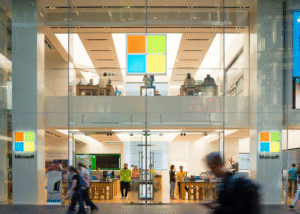As the financial world waits for key announcements, all eyes are on the United States and its central bank, the Federal Reserve. There’s a big question on everyone’s mind: Will the Fed make a large interest rate cut, or play it safe with a smaller one? Meanwhile, across the pond in the UK, the Bank of England is expected to hold off on further rate cuts, despite a shaky economy. Let’s break down what’s going on in both countries.
The US Economy is Showing Warning Signs
The US economy has been giving some worrisome signals. Many experts are now concerned that the world’s largest economy might be headed toward a recession. A recession is when the economy shrinks instead of grows, leading to job losses, lower incomes, and less spending. This is why financial markets are watching closely to see what the Federal Reserve will do next.

For the past year, the Fed has kept interest rates between 5.25% and 5.5%. Interest rates are important because they affect how much it costs to borrow money for things like buying a house, starting a business, or even just using a credit card. High interest rates can slow down the economy because they make borrowing more expensive. On the flip side, lowering interest rates can give the economy a boost by making it cheaper to borrow money and spend.
With the US economy showing signs of slowing down, many believe it’s time for the Fed to step in and cut interest rates. The big question now is how much they’ll cut.
Big Decision for the Federal Reserve
The Federal Reserve, or the Fed as it’s commonly called, is holding a very important meeting this week. This meeting will decide whether the US gets a smaller or larger interest rate cut. A rate cut would mean that it will be cheaper to borrow money, which could help get the economy back on track.
Some experts are predicting a quarter-point cut (0.25%), while others believe a bigger half-point cut (0.5%) might be on the way. The Fed hasn’t made any changes to interest rates since early 2020, so whatever decision they make will have a huge impact on the economy.
Why does this matter so much? Well, cutting interest rates by a lot could give a big boost to the economy by making it easier for people to spend money. But it’s also a bit risky. If the Fed cuts too much, it could cause inflation to rise. Inflation is when prices of goods and services increase, making it harder for people to afford everyday things.
Why is the UK Playing it Safe?
On the other side of the Atlantic, the Bank of England is taking a more cautious approach. The UK has also been dealing with a slow economy, but the situation is a bit different. While some people thought the Bank of England might lower interest rates again this week, most experts now agree that they won’t make any changes for now.
The Bank of England had already made a small quarter-point rate cut back in August. But this time around, they’re expected to hold off on another cut because they’re worried about rising wages. When wages go up, businesses often have to raise their prices to cover the extra costs. This can lead to inflation, which the Bank of England wants to avoid.
New data on inflation in the UK is expected soon, and it could show an increase in something called “core inflation.” Core inflation is a measure that looks at price changes without including the more unpredictable costs like food and energy. If core inflation goes up, it will make it harder for the Bank of England to justify cutting rates again anytime soon.
Financial Markets Are Watching Closely
In both the US and the UK, financial markets are paying very close attention to what the central banks decide. In the US, many experts believe there is a strong chance of a larger 0.5% rate cut. If that happens, it would make borrowing cheaper, but it would also be a sign that the Fed is really worried about the economy.
On Monday, the US dollar weakened slightly against the British pound, which is a sign that traders are starting to prepare for a rate cut. Oil prices also started to rise. This happens sometimes when the US is expected to cut interest rates because it affects how much people are willing to spend on oil and energy.
Michael Feroli, an economist at JPMorgan, said that he believes the Fed will make the “right” choice and go for a bigger 0.5% rate cut. He explained that this would help loosen up the economy, which is currently too restricted by high rates. He also mentioned something called the Taylor Rule, which is a formula that helps economists decide what interest rates should be. According to this rule, the US economy might need a bigger cut to get things moving again.

Meanwhile, Susannah Streeter from Hargreaves Lansdown noted that investors are still split on how big the cut will be. Some think it will be a smaller quarter-point cut, while others, like Feroli, are betting on the larger half-point reduction.
What Happens Next?
The big decision from the Federal Reserve is expected to be announced on Wednesday, and the Bank of England will follow with its own decision on Thursday. While the Fed seems more likely to make a bold move with a big rate cut, the Bank of England appears to be playing it safe for now.
This week is a crucial one for both the US and UK economies. A big rate cut in the US could give the global economy a much-needed boost, but it also comes with risks. In the UK, keeping rates steady might help control inflation, but it could also mean the economy remains sluggish.











